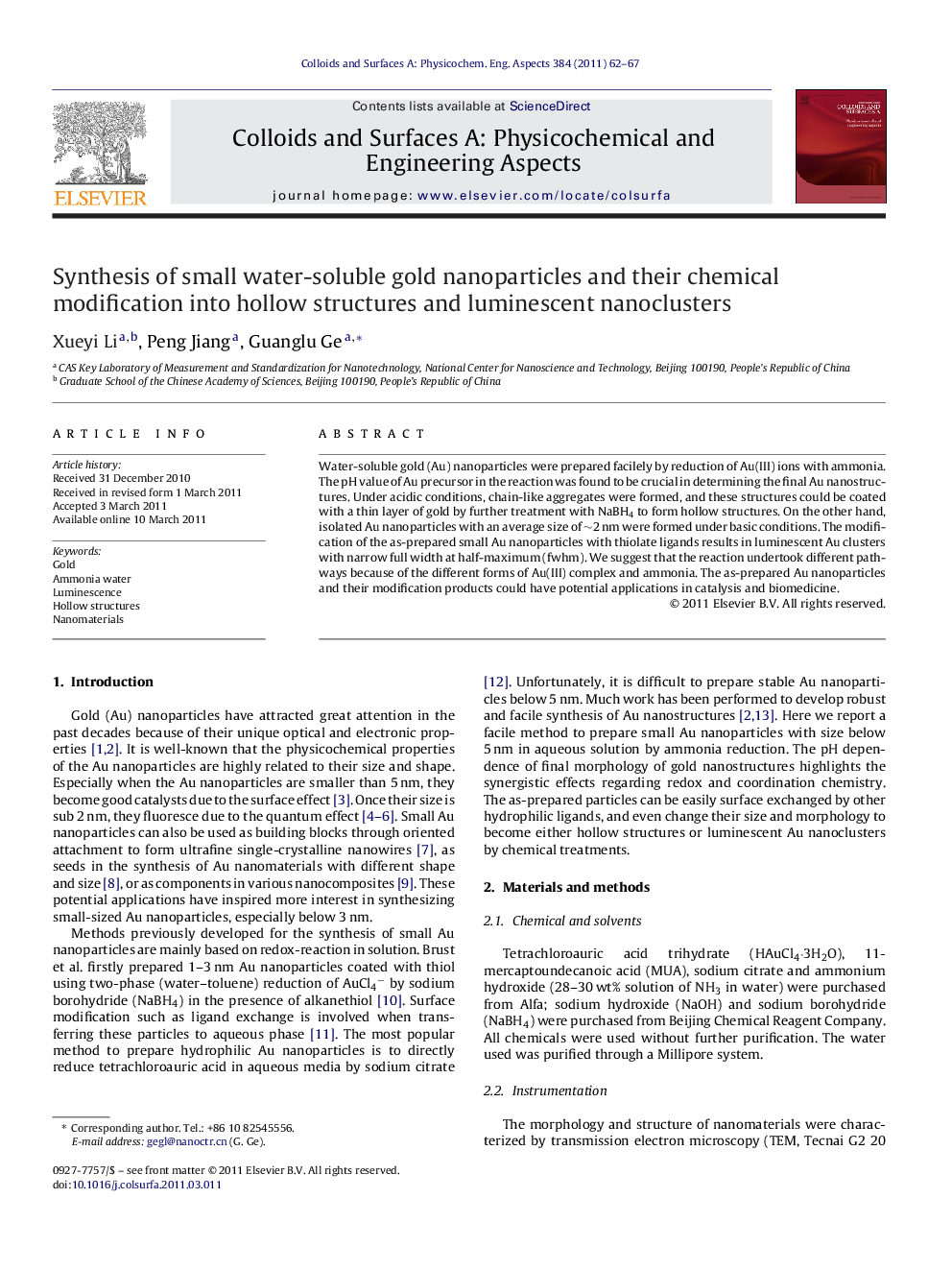| Article ID | Journal | Published Year | Pages | File Type |
|---|---|---|---|---|
| 594623 | Colloids and Surfaces A: Physicochemical and Engineering Aspects | 2011 | 6 Pages |
Water-soluble gold (Au) nanoparticles were prepared facilely by reduction of Au(III) ions with ammonia. The pH value of Au precursor in the reaction was found to be crucial in determining the final Au nanostructures. Under acidic conditions, chain-like aggregates were formed, and these structures could be coated with a thin layer of gold by further treatment with NaBH4 to form hollow structures. On the other hand, isolated Au nanoparticles with an average size of ∼2 nm were formed under basic conditions. The modification of the as-prepared small Au nanoparticles with thiolate ligands results in luminescent Au clusters with narrow full width at half-maximum (fwhm). We suggest that the reaction undertook different pathways because of the different forms of Au(III) complex and ammonia. The as-prepared Au nanoparticles and their modification products could have potential applications in catalysis and biomedicine.
Graphical abstractWater-soluble gold (Au) nanoparticles were prepared facilely by reduction of Au(III) ions with ammonia, in which solution pH affected both the reactivity and coordination between reactant species, and resulted in different morphologies of final Au nanostructures. Under acidic conditions, as-formed Au clusters assemble into chain-like aggregates, and these structures could be coated with a thin layer of gold by further treatment with NaBH4 to form hollow structures. On the other hand, isolated Au nanoparticles with an average size of ∼2 nm were formed under basic conditions. The modification of the as-prepared small Au nanoparticles with thiolate ligands results in luminescent Au clusters with narrow full width at half-maximum (fwhm).Figure optionsDownload full-size imageDownload as PowerPoint slideHighlights► We prepared water-soluble Au nanoparticles by reduction of Au(III) with ammonia. ► The pH of the Au precursor solution has significant effect on the final morphology. ► The modification of 2 nm nanoparticles results in either SPR or PL nanocolloidal Au. ► The treatment of aggregated nanocrystals by NaBH4 produces Au hollow structures.
